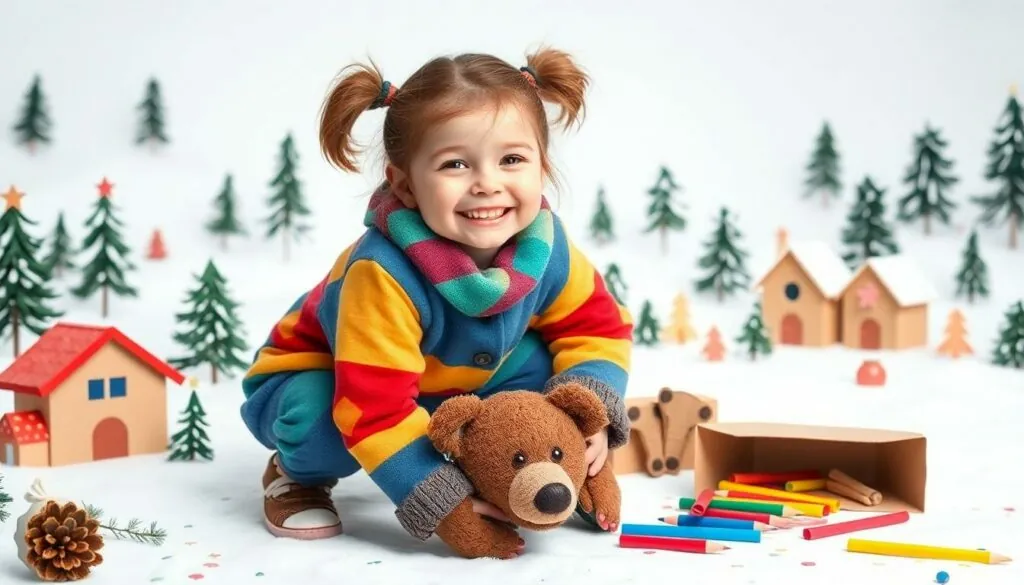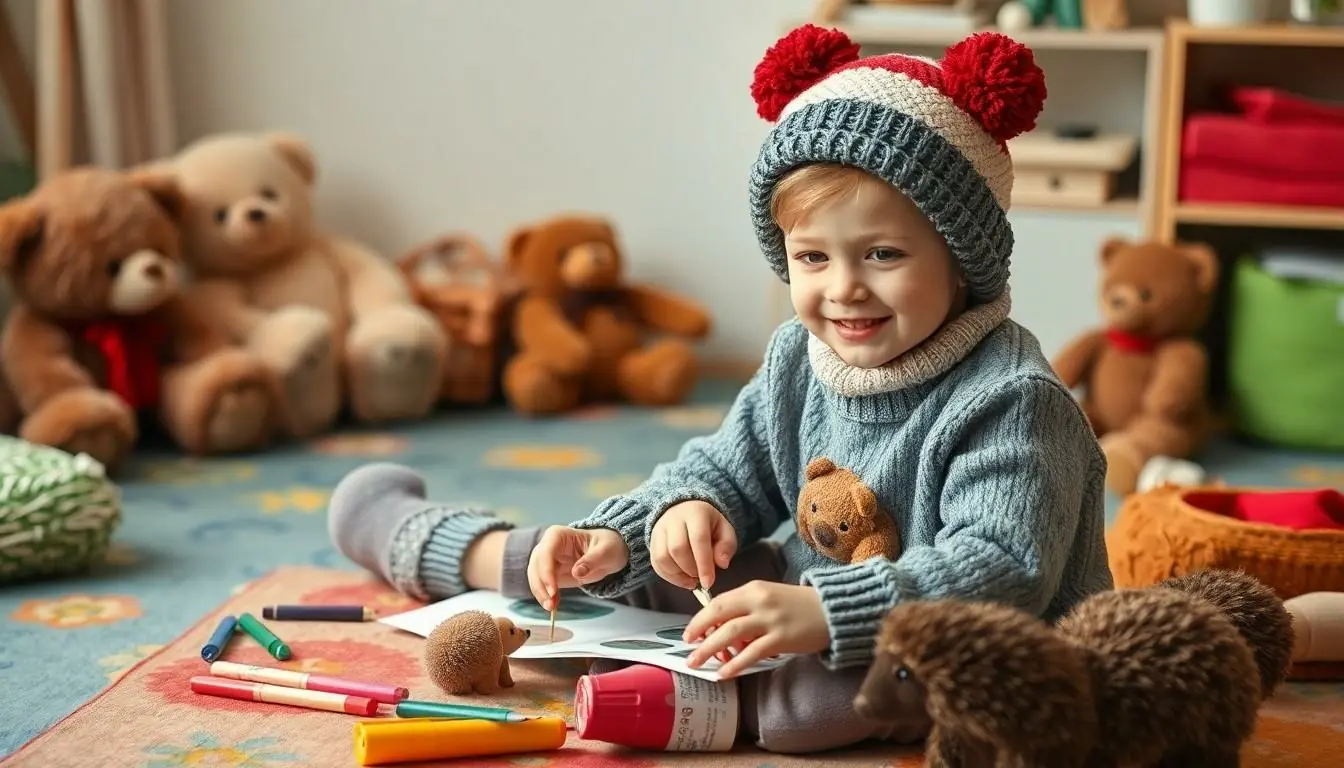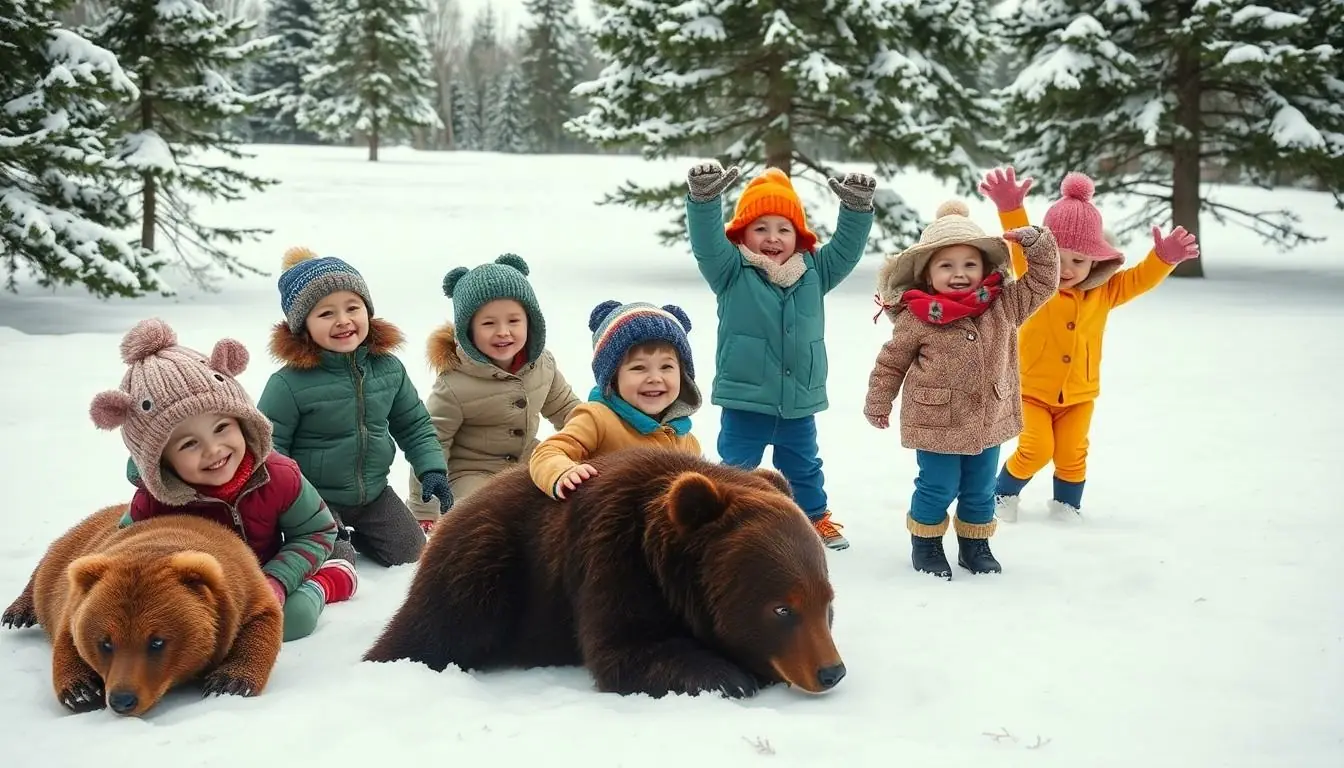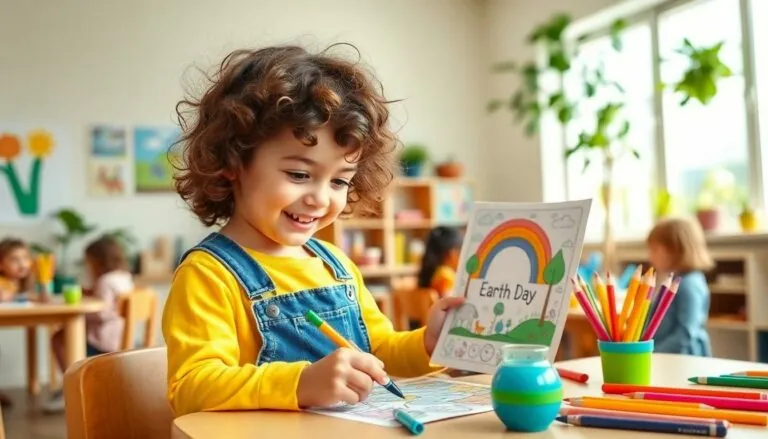Table of Contents
ToggleWinter’s here, and while bears are snoozing away, preschoolers can dive into some fun hibernation activities that keep their little minds engaged. Why let the cold weather dampen the spirits when you can transform your home into a cozy den of creativity? From crafting hibernating animals to storytelling adventures, there’s no shortage of ways to spark their imagination while they learn about nature’s winter slumber.
Understanding Hibernation
Hibernation refers to a state of inactivity that many animals enter during colder months. During this time, animals conserve energy while relying on fat reserves. Creatures such as bears, frogs, and ground squirrels exhibit this behavior, slowing their metabolism significantly.
Definition of Hibernation
Hibernation serves as a survival mechanism for various species. Many mammals significantly decrease their body temperature and heart rate. The process allows them to make it through harsh winters when food is scarce. Some animals engage in deep sleep, while others may wake periodically to eat stored food.
Importance of Hibernation in Nature
Hibernation plays a crucial role in ecological balance. Animals that hibernate help maintain population dynamics within their habitats. By reducing activity during winter, they prevent overpopulation and resource depletion. Furthermore, this behavior supports the environment by facilitating the cycles of flora and fauna, allowing for regeneration in spring. It also enhances biodiversity, promoting a healthier ecosystem overall.
Benefits of Hibernation Activities for Preschoolers
Participating in hibernation activities offers numerous advantages for preschoolers. Engaging in these activities not only supports learning but also promotes physical well-being.
Enhancing Cognitive Skills
Hibernation activities stimulate cognitive development in preschoolers. Storytelling and crafting encourage creativity while reinforcing problem-solving skills. When children explore hibernating animals, they learn about ecosystems and gain knowledge about nature. Engaging in discussions about animal behavior fosters critical thinking, and recognizing patterns in nature enhances observation skills. Often, hands-on activities improve concentration and retention of information, making learning fun and effective.
Promoting Physical Activity
Physical activity remains essential for preschoolers’ overall health. Hibernation-themed games can involve movement and role-playing, encouraging kids to imitate hibernating animals. Jumping, crawling, and stretching during playtime enhances motor skills and builds strength. Active participation releases energy, leading to better focus during quieter activities. Additionally, incorporating outdoor time, even in winter, allows children to explore their surroundings while staying active. Overall, these activities contribute to physical fitness and well-being, crucial aspects of preschool development.
Engaging Hibernation Activities
Hibernation activities provide preschoolers with creative and educational ways to explore winter themes. Through hands-on experiences and storytelling, children engage with the concept of hibernation effectively.
DIY Projects for Hibernation Themes
Creating hibernating animal crafts captivates children’s imaginations. Use materials like cotton balls for bear fur or brown paper bags for turtle shells. Making animal masks can encourage role-play while reinforcing knowledge about hibernation habits. Build a cozy den from blankets and pillows to mimic a hibernation environment. As children create, they develop fine motor skills and express creativity. Collecting leaves and twigs outside offers a tactile experience that connects them with nature.
Interactive Storytelling Sessions
Storytelling brings hibernation to life with engaging narratives. Choose books that illustrate hibernating animals and their lives during winter. Invite children to act out the stories, using their bodies to mimic animal movements and sounds. Incorporating props like stuffed animals or puppets adds an interactive element that enhances understanding. Questions throughout the session stimulate critical thinking and encourage discussion about hibernation. Utilize seasonal themes to provide context, making the learning process enjoyable and memorable.
Incorporating Hibernation into the Curriculum
Incorporating hibernation into preschool curriculums enhances children’s understanding of nature and animal behaviors. Engaging activities teach essential skills while connecting kids to winter themes.
Suitable Learning Objectives
Learning objectives surrounding hibernation should focus on observation, understanding ecosystems, and enhancing cognitive abilities. Children should identify which animals hibernate, explaining their adaptive strategies. Observation skills improve as kids explore local wildlife during winter months. Additionally, interactions during storytelling sessions can enhance critical thinking. Kids can also develop fine motor skills through crafting projects that represent hibernating animals.
Creative Lesson Plans
Creative lesson plans can revolve around various hibernation themes. Incorporating art projects using cotton balls allows children to craft animals like bears or frogs. Role-playing activities with animal masks can stimulate imagination and social skills. Introducing interactive storytelling with props keeps kids engaged and encourages active participation. Outdoor explorations can also be included, allowing children to discover winter landscapes while searching for signs of hibernating wildlife. This approach fosters curiosity about nature and deepens their understanding of the hibernation process.
Conclusion
Engaging preschoolers in hibernation activities not only keeps them entertained during winter but also enriches their learning experience. These creative projects and storytelling sessions spark curiosity about nature and animal behavior while promoting essential cognitive and physical skills. By incorporating hibernation themes into play and exploration, children develop a deeper understanding of ecosystems and the importance of biodiversity.
As they craft and role-play, preschoolers gain valuable insights into the world around them and learn to appreciate the wonders of nature. Embracing these activities enhances their educational journey and fosters a love for learning that will benefit them for years to come.









